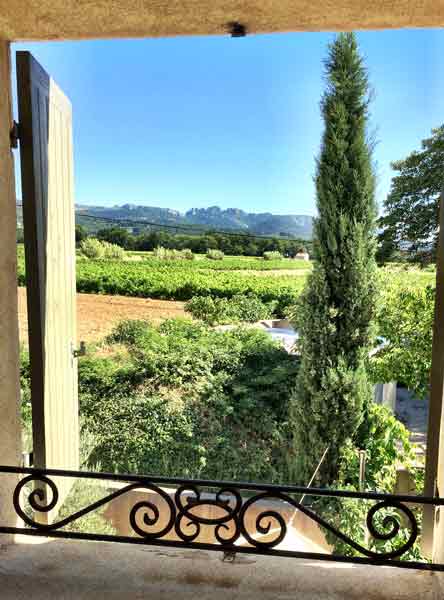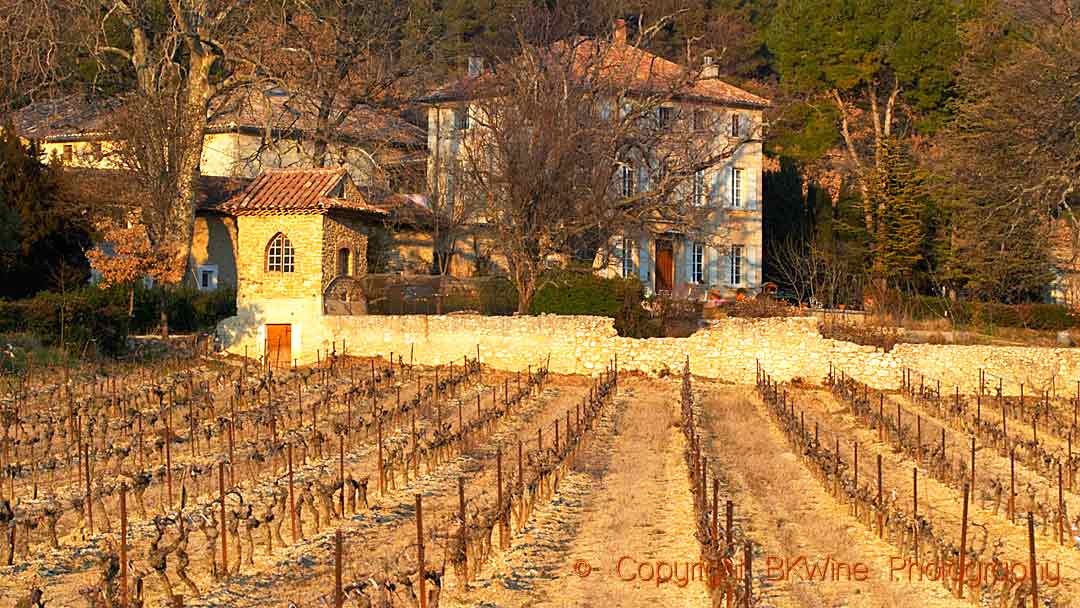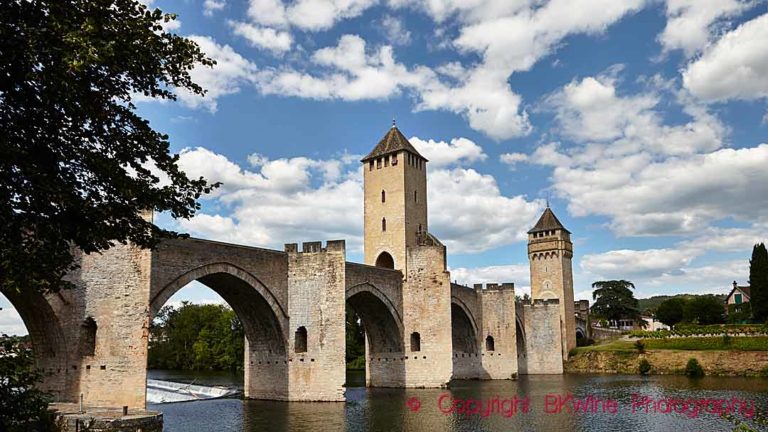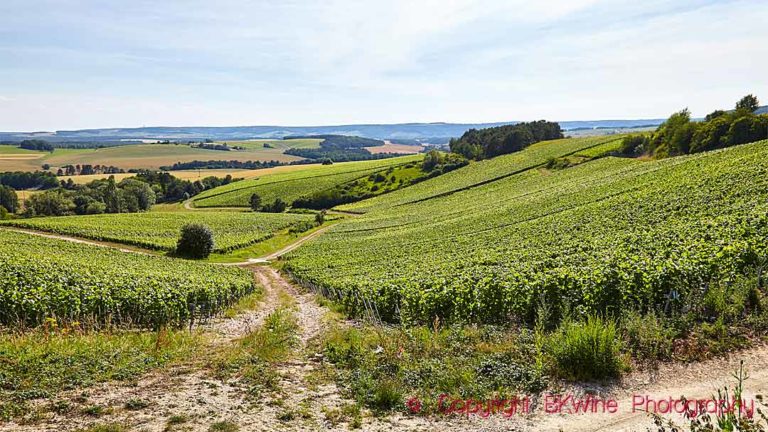A little brother is always a little brother. Even as he grows up, catching up with his big brother, borrowing his moped and kissing his girlfriend. Anyone who is knowledgeable enough to put Gigondas on the map will then point to neighbouring Châteauneuf du Pape. If the Gigondas vineyards cover 1,230 ha, big brother’s is more than double. At the system wine monopoly shops, the most expensive bottle of Gigondas costs SEK 499 (~50 euro), while the most expensive from Châteauneuf du Pape is… yes, obviously twice as expensive. Even the stones on the ground are bigger in Châteauneuf du Pape (grands galets, but that’s a different story).
But those who have taken a liking to the southern Rhône have long realized the benefit of taking the small road up to the village with the same name as the wine. Gigondas.
At the Opera Terrace restaurant in Stockholm, representatives from Gigondas called in present and invited to a tasting. At ten o’clock Louis Barruol from Château de St Cosme welcomed the forty-eight participants. The morning sun filled the room with a pleasant light and the 384 glasses that had been poured spread an aura of intense red aromas. That the theme is red is inevitable because there are no white grapes grown on a commercial scale in Gigondas.
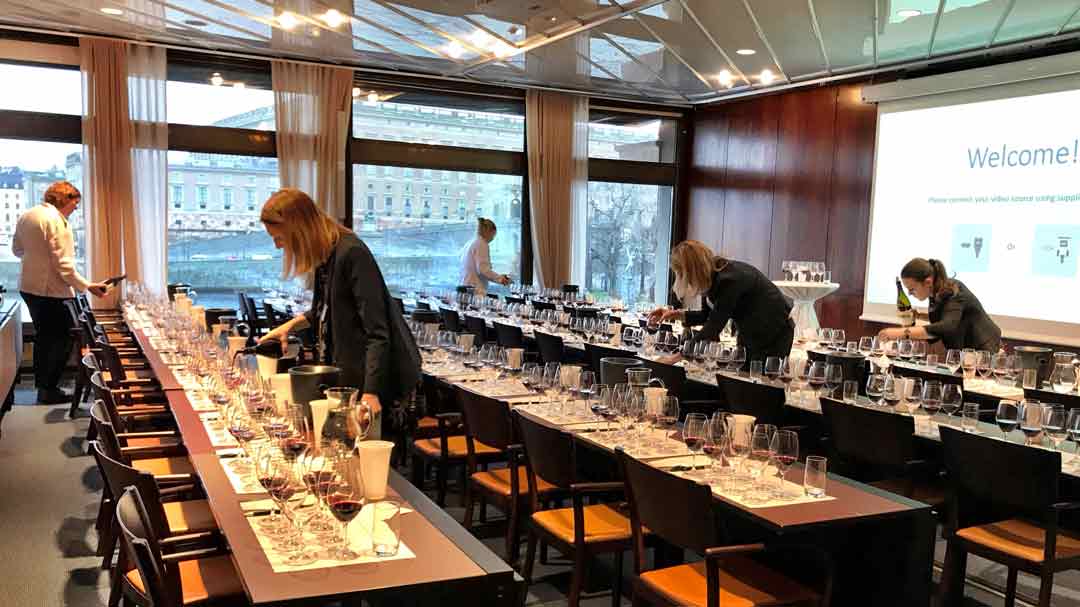
The introduction was made by Andrew Jefford, author and columnist at Decanter. “How many of you have been to Gigondas,” was his initial question and surprisingly, almost a third raised their hands. For my own part, I have visited Gigondas on two occasions. The first time after a visit to Châteauneuf du Pape where a tour bus backed into my car and the vineyard visit was “enhanced” by an American group who spontaneously and loudly poured into the wine cellar.
On the second occasion, we drove straight up the hill to the cosy village on the slope. Gigondas is so small that you walk through the village from end to end on five breaths. If you are going to visit the church at the top of the village, it will require a few more breaths, but as a reward, charming outdoor café and restaurant seating down at the village square awaits in the shade of a tree.
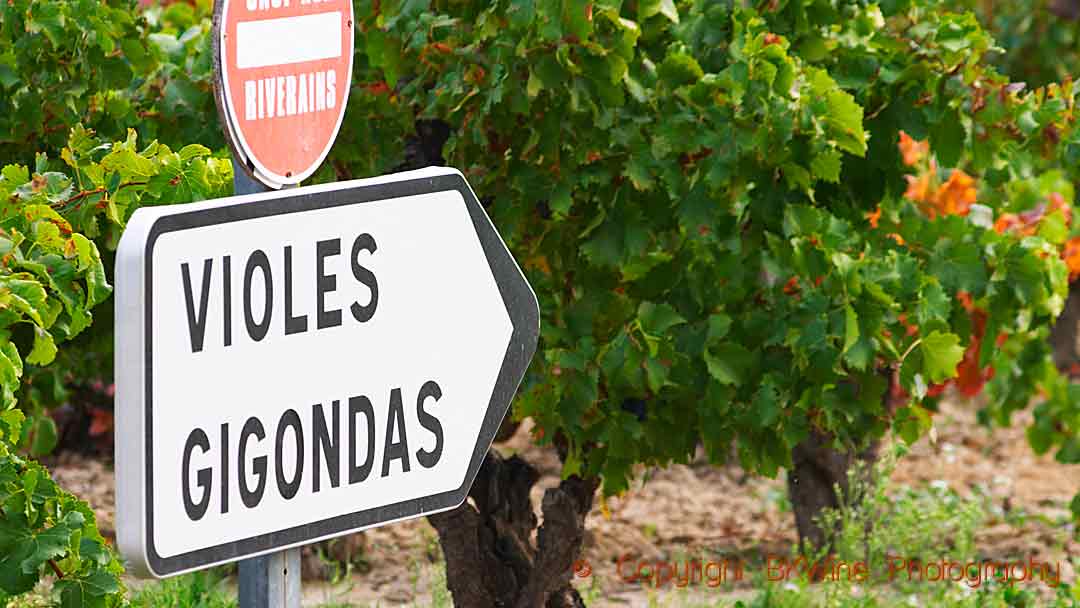
Andrew Jefford spoke warmly about the area which was granted cru status in 1971. Yes, they do have a Mediterranean climate, but, according to Andrew, the region gets more rain than London. Large parts of the region are terraced and the hilly terrain stretches up to 400 meters altitude. Vineyard designations such as “le pas de l’aigle” (the eagle’s step) rhyme well with the rolling landscape.
Whether it is the altitude or the influence of the Mistral wind that gives a later harvest, I never quite understood. But in general, the harvest in Gigondas is two to three weeks later than in Châteauneuf du Pape, which is only twenty kilometres away.
The villages, if we are to continue to compare them, have almost identical grape compositions with grenache, syrah and mourvèdre as dominant grapes. We all know that terraced vineyards require more man-hours for harvest and with a harvest yield of an average of 25 hl/ha (max 36 hl/ha), it should only create a more expensive wine, but not so.
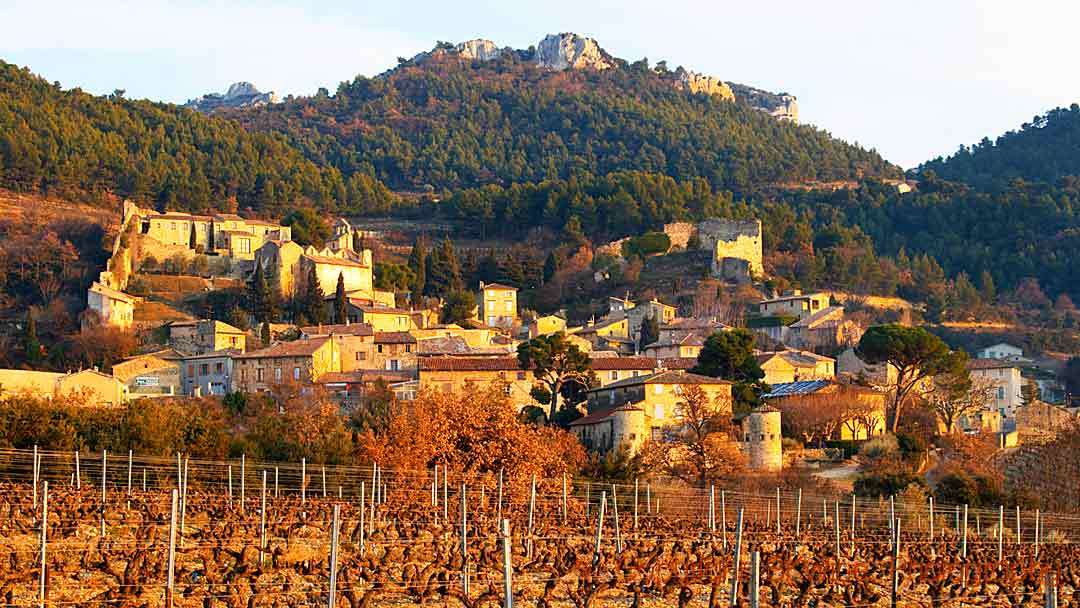
And the eight wines, how did they taste?
To simply say all of them delicious is not quite true, as the winemakers’ different ways of working gave a broad and variable impression of the area. One extremity in one direction was the 2016 Château de Saint Cosme, which does destem the clusters at all, which gave a somewhat harsh feeling in the mouth. Most likely, it needs more time. A personal reflection is that the wines of Gigondas have a “drinking window” between five to ten years. Not without exception of course.
As a contrast, at the other end of the scale, was the 2016 Domaine Santa Duc Clos Derrière Vieille which was definitely ready. A gentle and almost discreet nose. The body is light as a feather, the tannins beautifully active and there’s a long and comfortable grip. The wine stands out with its elegance and it asks to be served cool. A completely different approach than the other wines from the village. Absolutely no oak and most of it destemmed. The acidity was relatively high and I can certainly imagine that it will age with dignity.
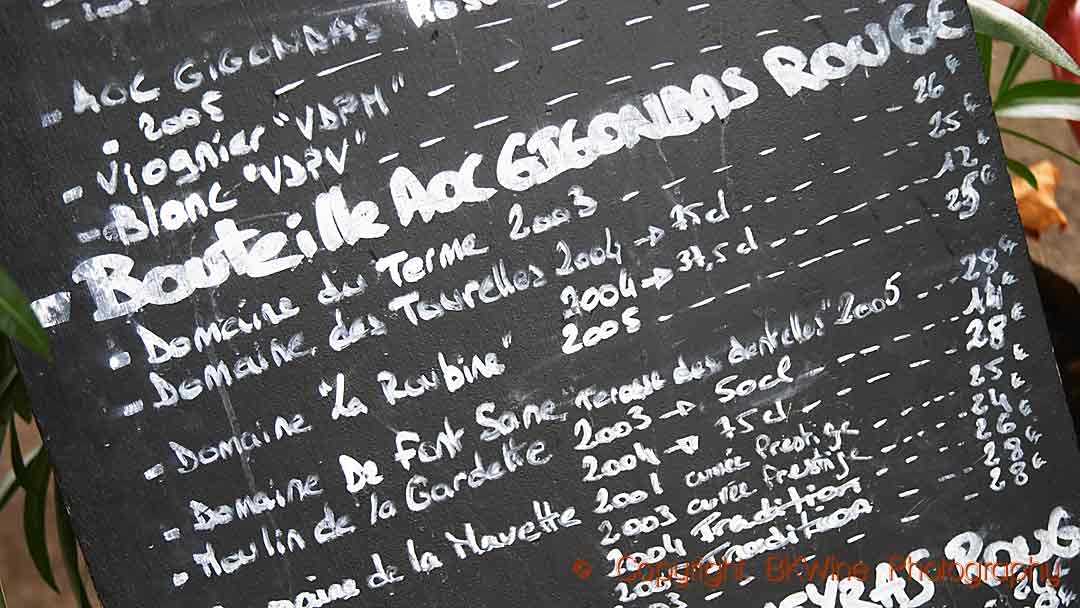
One producer who was on the list but who for some reason was not included in our tasting glasses is Pierre Amadieu. Based on a good friend’s advice, I have followed that producer for a decade and I think I have a good idea of their wines which are in between the two above. They make two wines from Gigondas, Grand Romane and Le Pas de L’Aigle. Slightly edgy when they come on the market but after about five years the details spread out and the experience of a really good food wine emerges.
The wines we have pulled the cork on after ten years have certainly had lovely mature tones but in some way have lost the vitality. At this point, however, we have not completely agreed around the table, which may make the question something of an issue of personal taste. On the other hand, there has been a consensus on the fact that these wines are very good value.
If asked if you get more wine for your money in Gigondas, my answer is yes. When asked if it is the same wine as “big brother”, I very reluctantly give an answer. Perhaps we can simply say that it has more power than elegance, maybe this is a hint to a certain direction. You must not be too pig-headed on matters of taste. Many of us would definitely fail in a blind tasting with wines in a similar price range.
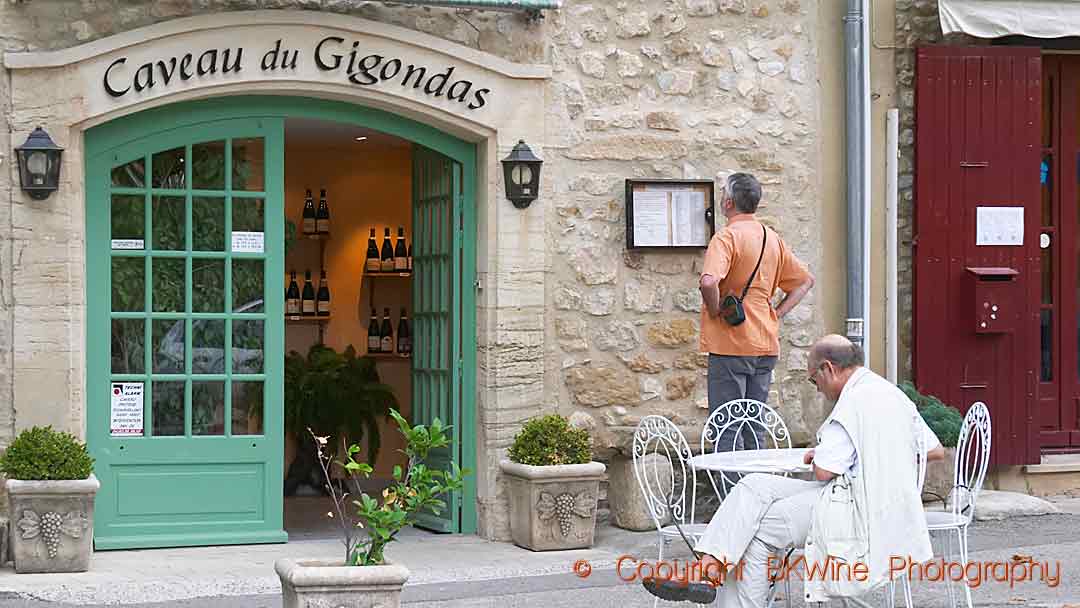
In addition, I want to blow the horn both for the region and for the village as a travel destination. A bike ride is definitely the best way to create an appetite in this beautiful area. Winding roads, very limited traffic and very beautiful. If you like living in the midst of the fields, you can take a room at Maison Sadina, sleep with open windows and enjoy the compact tranquillity.
The absence of sounds that you have even a small village makes it possible to hear the three-legged dog settle in the gravel down in the yard. If you want to avoid the bike ride after dinner, there are a couple of charming hotels in the middle of the village. Gorgeous views, a village square market and the Caveau du Gigondas are things not to miss. The village’s own wine shop with a magnificent selection of Gigondas wines. To taste and to buy at the same price as at the producers’.
With good basic facts, a compilation of the producers and some nice pictures of the region, www.gigondas-vin.com is worth a visit to prepare. Have a nice trip.
Sven-Olof Johansson is a wine enthusiast in Stockholm with a long history of wine tasting experiences.
